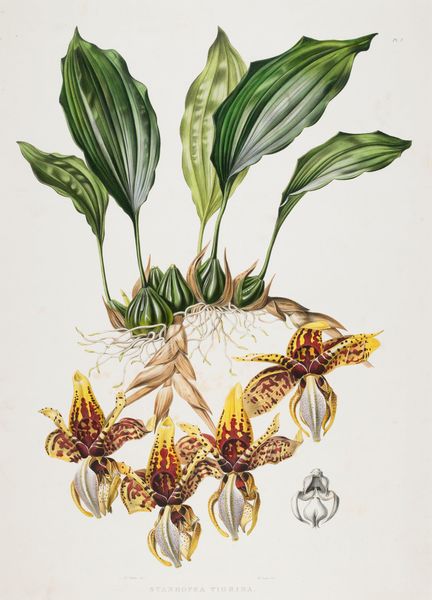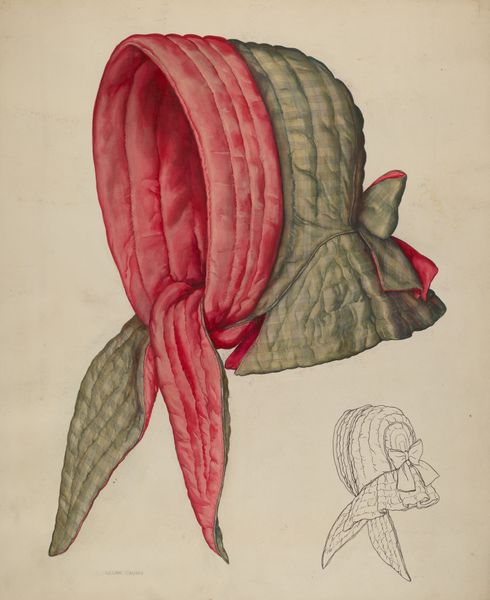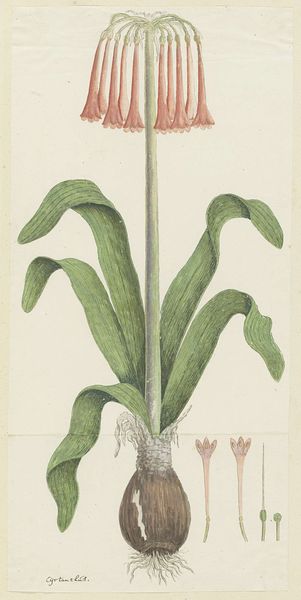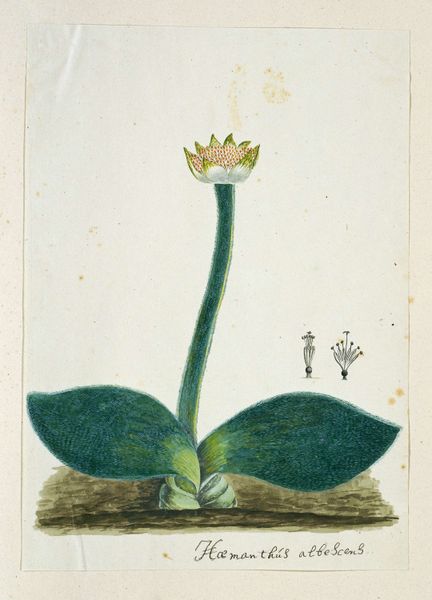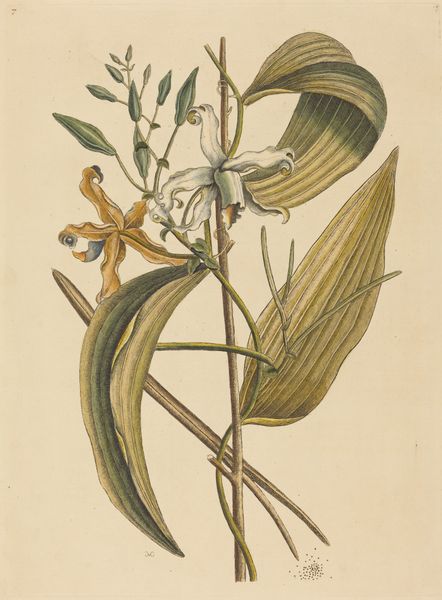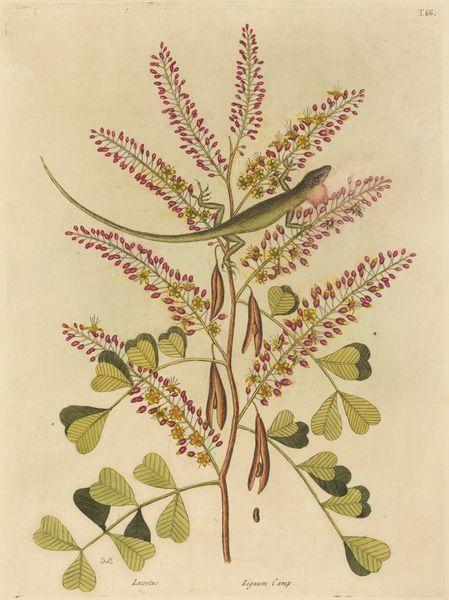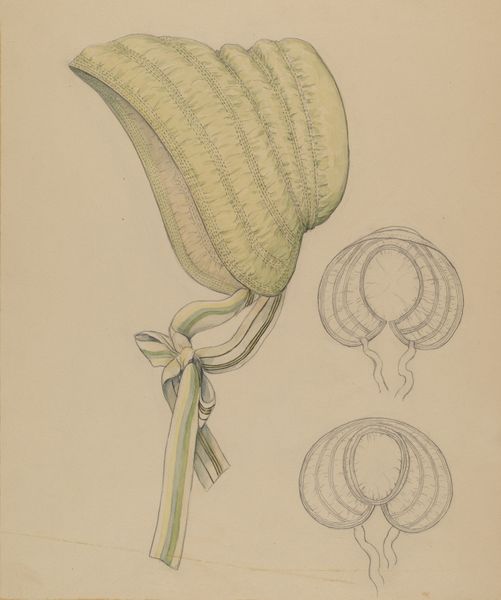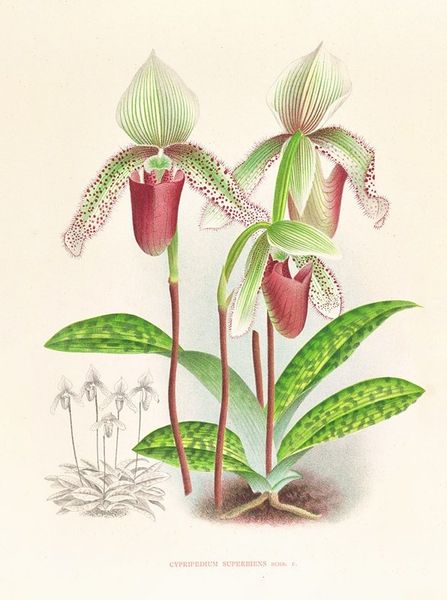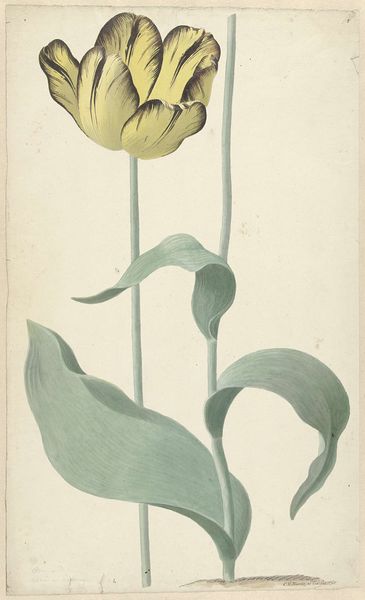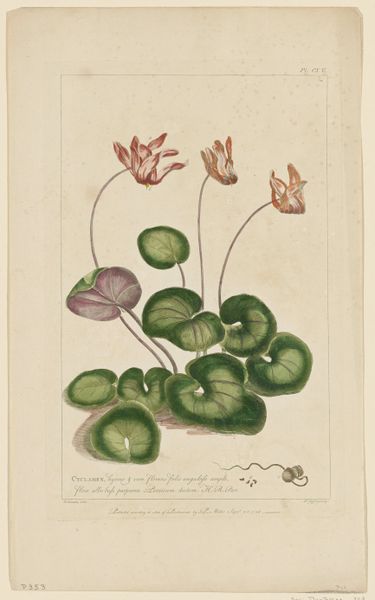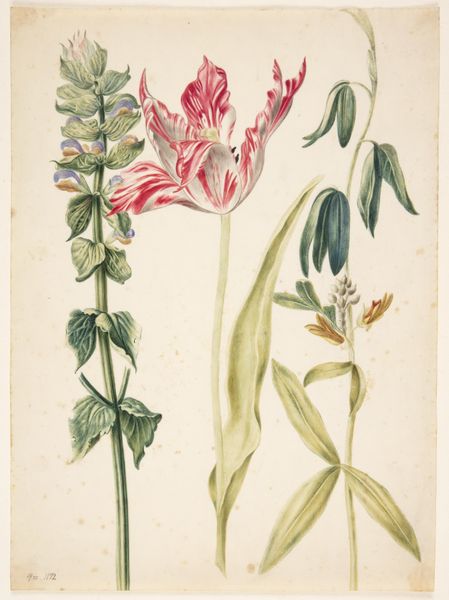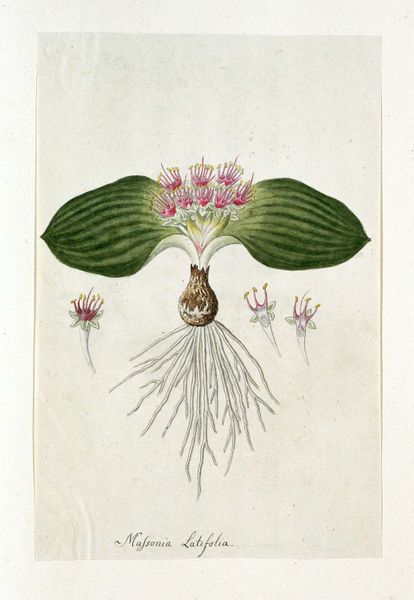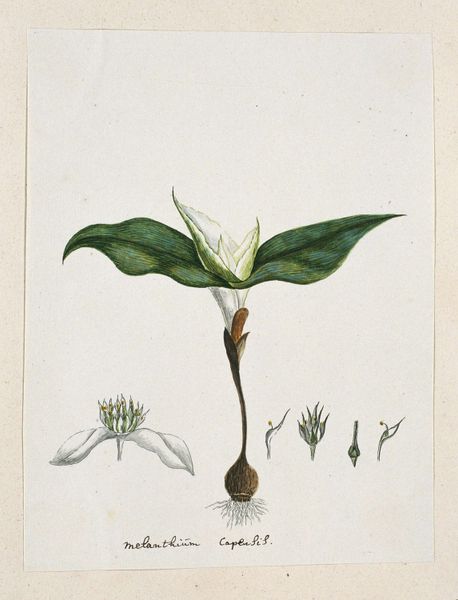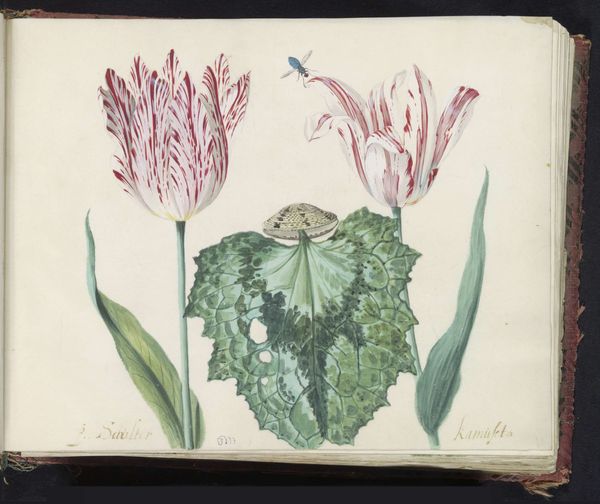
#
light pencil work
#
childish illustration
#
quirky sketch
# print
#
incomplete sketchy
#
curved letter used
#
england
#
watercolour bleed
#
watercolour illustration
#
botanical art
#
fantasy sketch
#
watercolor
Dimensions: 9 1/2 x 7 3/8 in. (24.13 x 18.73 cm) (plate)
Copyright: Public Domain
Editor: Okay, so next up we have *Greater and Lesser Humming Birds from Surinam*, made in 1743 by George Edwards. It's currently at the Minneapolis Institute of Art, and it's a print... At first glance, it looks like a colorful, if slightly bizarre, botanical illustration. I mean, is that a spider hanging over the leaf? What’s going on there? How do you interpret this work? Curator: Bizarre is a brilliant word for it, don't you think? It's as if Edwards isn't just showing us nature, but giving us a little wink, too. He's tickling our fancy, as much as educating us. Think about it – a rather wonky frog, a spider seemingly suspended by an invisible thread, all nestled within a plant. It is playful! Do you see the slightly nervous energy in that composition? Almost like catching a fleeting moment in a fantastical garden. It's scientifically *accurate*-ish, but also totally out there! I can almost imagine Edwards chuckling to himself as he drew it, can't you? Editor: Yeah, I see what you mean. It does feel less like a precise record and more like a whimsical interpretation. I initially thought it was somewhat clumsy, but your idea of a "wink" makes a lot of sense! Curator: Absolutely! Consider the context: 18th-century England, a fascination with the 'New World' but access limited to sketches and stories from explorers. So, what's more enticing, a boring fact or a story touched with some imagination? It really gets me thinking about the relationship between art, science, and imagination. Editor: It’s interesting to think about the artist having that imaginative license because of limited access. Now that’s going to stick with me. Curator: Precisely. It makes this illustration not just a depiction, but also a sort of visual poetry.
Comments
No comments
Be the first to comment and join the conversation on the ultimate creative platform.
